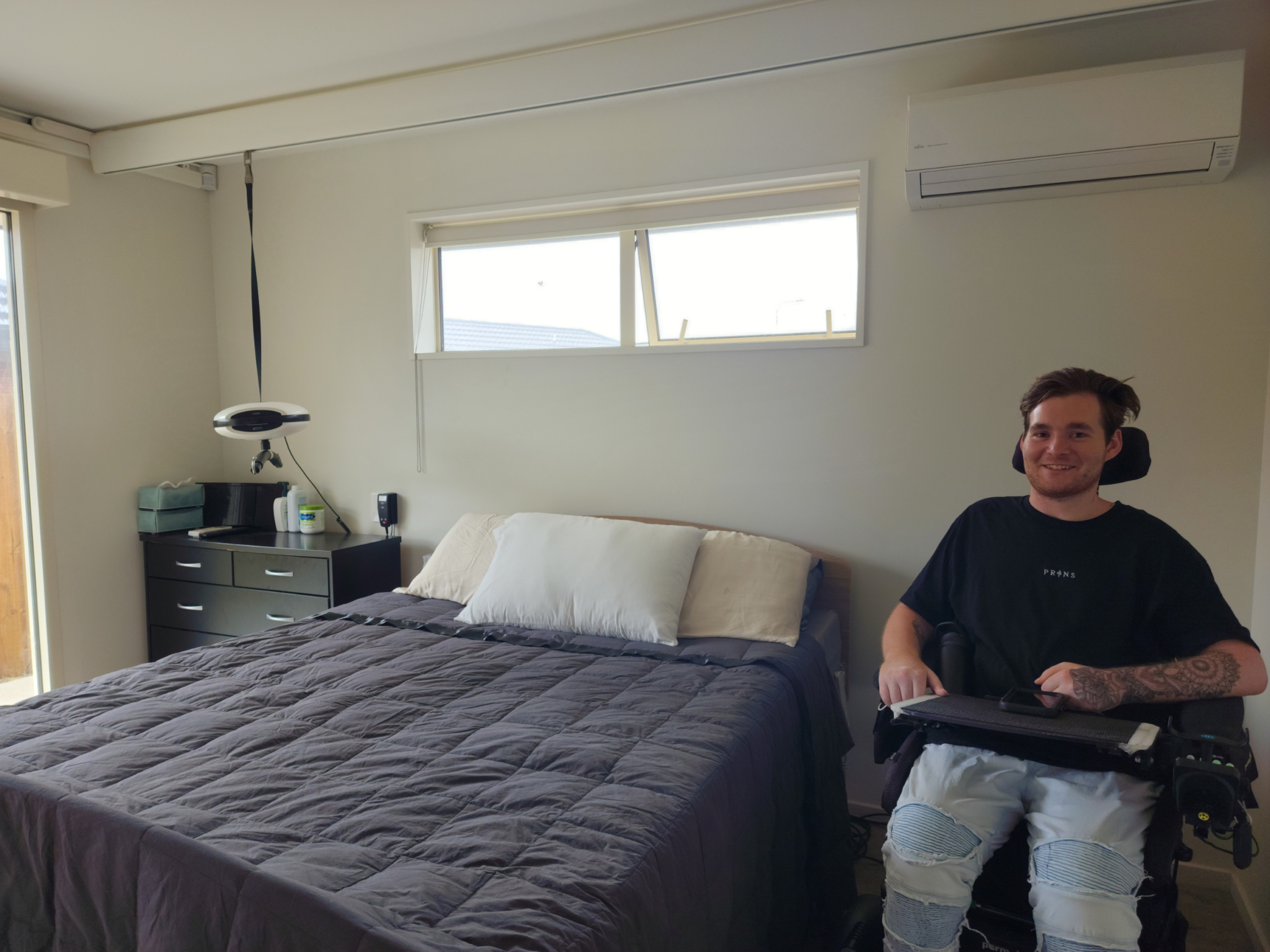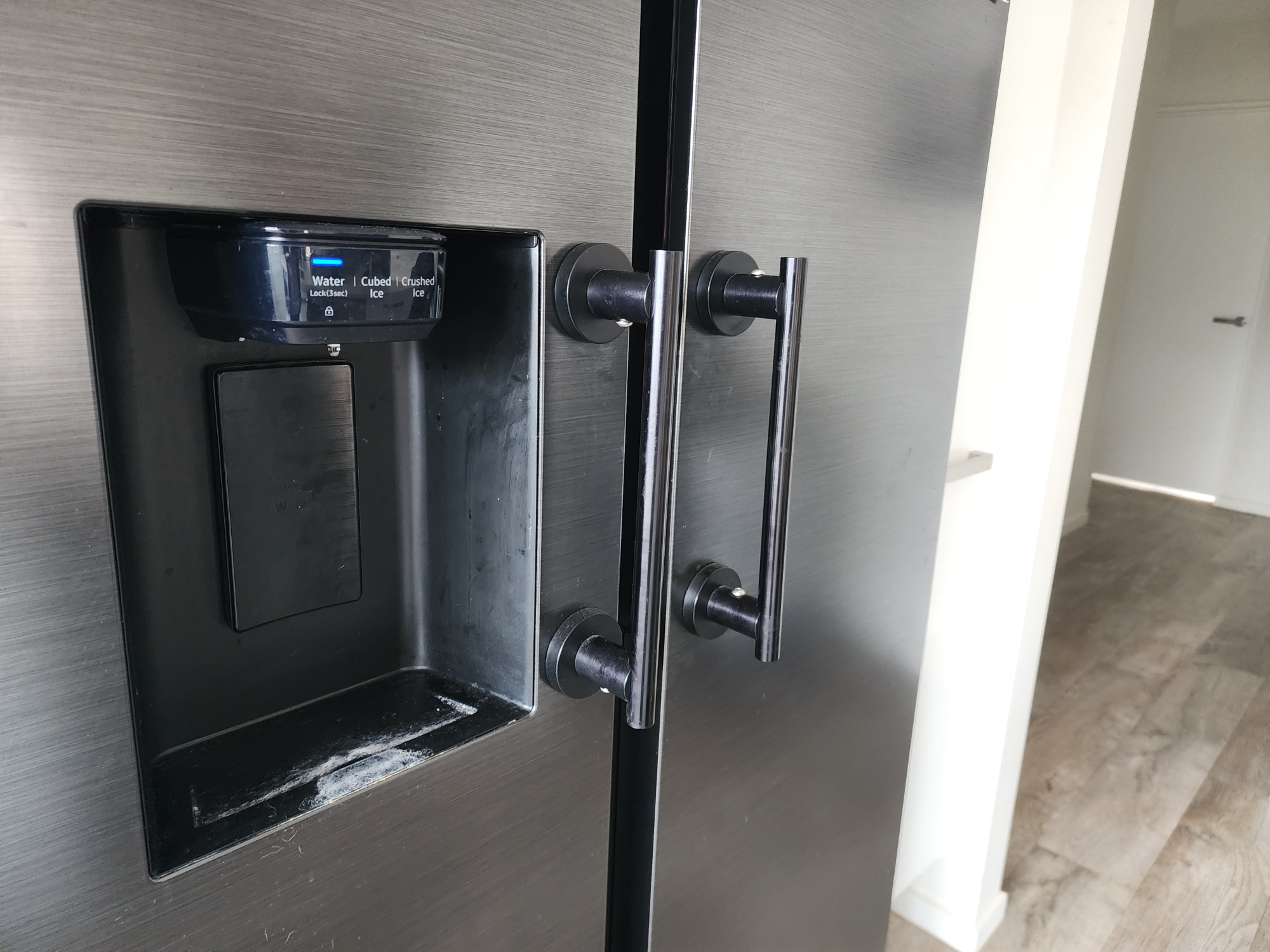Housing modifications for increased independence - Michael's story

At Laura Fergusson Brain Injury Trust, we provide a number of assessment, rehabilitation and residential services.
Our specialist team support people who have had brain injuries, spinal injuries, and any type of complex physical injury, such as a leg or arm amputation.
Michael Challis is a client who has been supported by our service for some time, working incredibly hard on his independence and his recovery.
This is his story:
For three years prior to his injury, Michael was a concrete placer, working on driveways, pathways, house foundations, or anywhere that needed his skills. He loved the hands-on nature of the work, and spending time with great colleagues.
In his spare time, he loved to fix up his truck, spend weekends at the river, and then fixing the truck all over again!
He also loved playing rugby and wakeboarding, until he was too sore to go again.
Four years ago, Michael’s life took a shift. After an especially busy 68 hour work week, Michael was involved in a car accident, car versus power pole.
Fortunately, there was a witness nearby, who immediately called emergency services. Michael broke his back and damaged his spinal cord between the C4 and TI vertebrae. This resulted in a loss of all strength, sensation and other body functions below - the highest level of injury. For a few months he lost all movement below his neck and had to spend that time in the Intensive Care Unit, before moving to Burwood Hospital for another four months during which time he gradually regained some movement in his arms but continued to have little movement or sensation in his hands, trunk and lower body.
After 199 days in total, it was time for Michael to make the move home, leaving him with the huge challenge of having to adapt to his new way of life.
“It was different going home, I didn’t know what to expect,” says Michael. “One of the biggest challenges has been losing independence and needing help with any basic tasks. Things as little as opening a letter, and picking it up, you try it over and over again. But then being stubborn only lasts so long before you need to ask for help.”
Michael’s stubbornness has worked in his favour when it comes to rehabilitation, as he has worked incredibly hard to do everything possible to gain his independence back.
He has worked with LFBIT occupational therapists and physiotherapists to begin getting back into movement and regain everyday skills. He works hard on building up his strength at the gym and has used his hand bike to also increase his exercise.
Alongside his rehabilitation, he has had further specialist input provided by our Housing and Seating Assessment Services.
Michael has had extensive work done in his home to give him the opportunity for more independence.
The first major modification was the flooring, as he had the carpet replaced with vinyl flooring throughout the house. Michael says this was his favourite modification, as it gave him the freedom to move around in his manual wheelchair, without getting stuck on the soft carpet.
“We knew that using the manual chair was my biggest goal. So, we pretty much did everything possible around the house to make that easier for me to use and just be able to get around.”
Everything possible was done, including widening the doors, changing the layouts of rooms, and widening gaps, so there is not such a tight squeeze.
His bathroom was remodeled to provide one big wet area to wheel into, instead of having to get himself in and out of the shower. The bathroom vanity was also replaced with one that he can now comfortably wheel under. A ceiling hoist system has been installed in the bedroom as well which allows Michael to get from his bed to his wheelchair and shower commode.
Getting in and out of the house was also a priority, first made easier by two automatic doors. These doors can be opened by waving at a sensor on the wall, but Michael also has a button on his chair, which open the doors quickly and easily. Previously, if he ever needed to make an emergency escape, the door in his bedroom led to a step down to a patio and wet grass. Now, there is a ramp that runs around the perimeter of the house, giving him ease of access to his backyard and a second exit.
Beyond the large modifications to the house, there are also many smaller, less noticeable changes that make huge differences to Michael’s independence. For example: small aids like suction rails that stick to the fridge door, making it easier for Michael to open and grab his drink bottles. Recently, he has had new lights placed in his lounge and these will eventually be replaced throughout the whole house, all of which he can control from his phone.
“The housing modifications made a huge difference. It all looks great and just makes the house so much easier to use and get around.”
Michael is hoping to get back into the workforce, perhaps even being able to work in the administration side of a concrete business, matching his skills and experience. As an expert in the trade, he would love to continue to help out in any way possible. He is also considering some future study.
We thank you for sharing your incredible journey of success with us Michael, we are so thankful we could make your home a place you can be independent in.
Good luck with all of your future plans and thank you for letting us be part of your rehabilitation journey.
